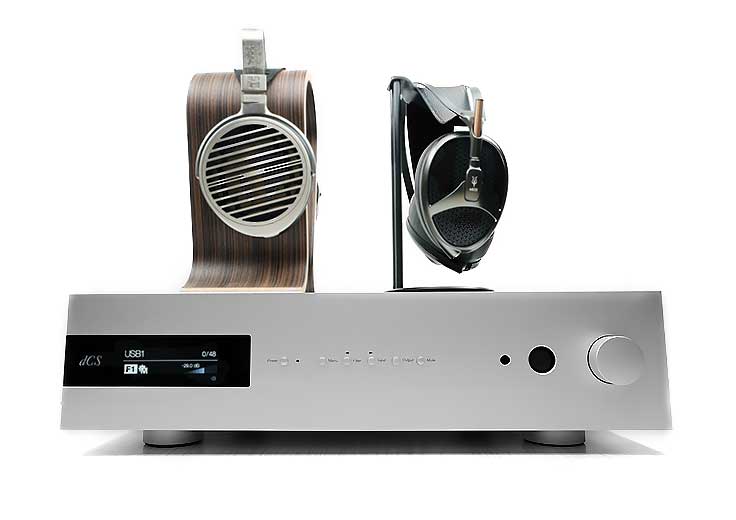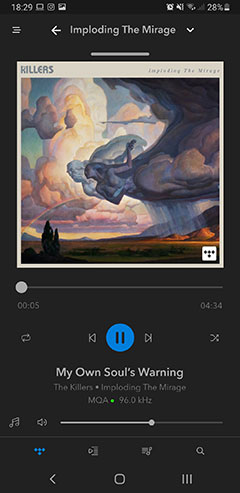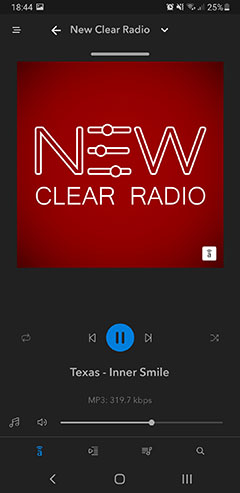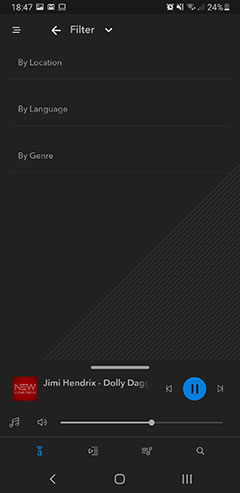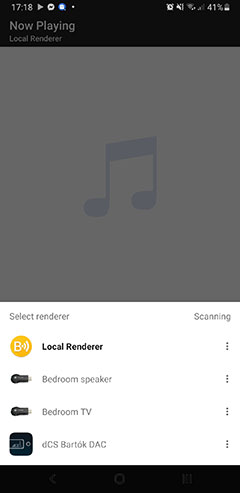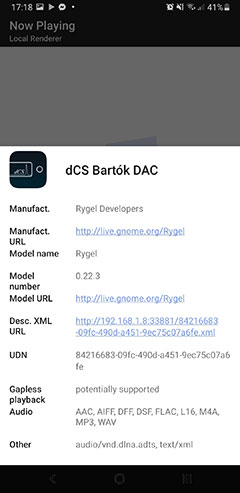dCS Bartok Sound Impressions
Summary
The performance of the Bartok is nothing short of breathtaking. It is probably the most natural-sounding and detailed amp/DAC combo I have reviewed to date.
To define the timbre as neutral to natural is a complete understatement. The level of dynamic range combined with a huge dollop of textural and spatial detail coming at you from all angles is just unreal.
Practically all of our tested headphones sounded not only optimal but also life-like in their performances on the dCS Bartok. There is no hint of artificiality, forced brightness, or thinning out of instrumental timbre to etch out space. It makes a mockery out of any perception solid-state amp energy will come at a price of sounding cold and clinical.
I do feel a slight fade in the treble presence of the Bartok output compared to other Class A amps such as the Formula S Xi Audio which are slightly brighter and it is definitely not as ‘clean’ as the Hugo TT2 rapid-fire delivery. This tuning may draw you more to the bass-to-mids performance of most pairings where the sound is particularly powerful.
With something like the Susvara the Bartok sounded incredibly smooth and clear with huge levels of resolution and a superb black background that just draws you right into whatever you are listening to. HeDD Audio’s HeDDphones subterranean bass tuning was perhaps the most addictive with an unbelievable synergy with the Bartok’s full-bodied low-end tuning.
I have always felt the Xi Audio Formula S was as good as it gets for delivering a tonally balanced signature in a solid-state headphone amp. The Bartok so far beats it handily by delivering that balanced tonality but with a lot more perceived power, richness, and brilliant dynamic range.
Timbre
However, I want to dispel the notion that you will get ‘a perfect sound’ with the Bartok. This might sound misleading as in “oh no it is not perfect”. It is to me, but in the sense that audio recordings are never perfect either and the Bartok can pick up on that in a very pleasing way.
When I was doing the comparison work on the Bartok the one thing I came away with was how distilled the sound can be from other DAC/amps. Almost too refined in their timbre, too perfect in a strange way.
For example, vocals can be raspy or sound pure, breathing techniques might be strong and to the fore, pop filters on mics might not be just right with lots of natural sibilance, producers might leave the recordings as tremendously raw or leave a lot of live audience participation in the mix.
Every track has a nuanced signature and quite often every producer has a well-known approach, for example, Bob Rock when he took over Metallica’s Black album from the previous producer Fleming Rasmussen.
He transformed the ‘Justice’ sound from a drier smallish mix with almost no bass timbre into a deeper, wetter richer tone and brought a lot of power and depth back into their sound.
In a way, the Bartok is doing exactly that with most of the tracks I sent to it. Getting away from that sterile clean perfect sound and giving you something raw, dense, rich, and powerful.
If a track has reverb, you are going to hear it in all its glory, if a vocal is guttural and chesty you are going to easily pick that textured sound out with a good set of headphones. Everything that is raw in the recording, comes out raw sounding with the Bartok as both source and amp.
Staging
The Bartok experience is all about depth and width and more importantly, generating excellent power from that depth. The low-end power is incredible, to be honest, and not just right at the lowest reaches but seeping up into the mids it carries that power and density with it if paired to the right headphones.
Despite the Bartok offering excellent headroom and a wonderfully black background, I would not consider this to be an ethereal airy staging experience. Unlike our tested competing amps, the Bartok does not really push the treble that far forward and you can hear that difference side by side. It is less dominant and more coherent, especially for percussion in recordings.
Cymbals and high hats have tons of texture and weight but its even-harmonic weight as opposed to odd-harmonic overtones that shine brighter so they are pleasing sounding rather than crisp and shimmering in tone.
The office Studio 6 SET actually sounds a little bit airier and a shade brighter from the upper mids onwards on the HeDD Studio HeDDphones but that is not to say the Bartok is relaxed or dark but rather it feels neutral in quantity and positioning.
Crossfeed
There is a distinct change in the presentation with the crossfeed option turned on and to be honest, I prefer it on rather than off.
With it off, you do get a more separated sound but for vocal performances, it almost seems as if you have a duet such is the force of the left/right stereo separation, especially with the balanced output and headphones that excel in imaging such as the Abyss Diana Phi.
It might seem more energetic and vivid but also a little artificial in terms of the listening field with vocals cast out too wide for me. In summary, it does not feel quite as natural as it does with the crosstalk option applied.
With the crosstalk option on the vocals become more centered and instruments fill the wider aspects of the staging as they should for a more realistic staging presentation. Combine that with Bartok’s natural timbre and you get a very ‘real’ sound, one closer to a speaker-like experience.
Synergy
Noise
The noise floor on the Bartok is insanely low for such a big beast of a desktop amplifier. Normally Class A can deliver a bit too much noise to efficient monitors, especially at 1.4W into low loads. Not the Bartok, not least until we started using the Campfire Audio Solaris SE did we detect any hint of background hiss.
For example, a 64 Audio U4SE pairing delivered a pitch-black background with the Bartok and that is rated at just 12Ω and a fairly sensitive 116dB SPL rating. The channel balanced at -80dB upwards was impeccable. Now mind you, you do have to set the gain level down to -30dB to get enough control on current but the volume was beautifully controlled all the way up.
Based on this, something like the oBravo Ra C-Cu and Audeze’s LCDi4 are tailor-made for the Bartok and do deliver some very black backgrounds and plenty of current and voltage to play with.
Power
Headphones will vary but almost all of the ones we tested have plenty of headroom depending on the gain setting and output mode of the Bartok. This included the Abyss Headphones Diana Phi, HeDD Audio HeDDphones, Hifiman’s Susvara, and Meze’s Empyrean.
Balanced
Both the Abyss Diana Phi and the Susvara do need a gain setting of 0 to maximize current but otherwise, the dynamic range was truly world-class using the Bartok’s balanced output mode.
The Phi honestly sounded phenomenal and one of the best desktop headphone amp pairings I have heard to date. It sounds incredibly rich and smooth with any concerns about its treble dominance creeping in right out of the window.
The Susvara demanded a little bit more but again, higher than -20dB and it started to get really loud. Dynamic range was excellent on the Susvara but like the HE6 you go even further for power tapped into the Chord TTOBY power amp and it will sound immense.
Single-ended
The HeDDphones will run just fine from its stock sing-ended 6.35mm cable but if you have a mini-XLR 4-pin XLR terminated balanced cable it will sound a bit tighter with superior channel separation paired to the Bartok’s more powerful balanced output.
I actually loved the synergy of the HeDDphones and how the Bartok teased out that bass response. It sounded incredibly physical and deep, just as it should do.
The Empyrean was probably the easiest of the headphones for power demands and you can drop the gain setting by 10dB from the highest setting without suffering any loss in current control. In terms of synergy, the vocal richness of the Bartok was like bees to honey for the Empyrean which excels in drawing out heavily textured vocal performances.
I also have to give props to how it teased out the Empyrean low-end beautifully, even with the leather pads which tend to be more neutral compared to the Velour. Not just a wall of sound but with crazy definition and layer but with a lick of natural warmth to wet the note edges to prevent them sounding too clinical.
Streaming Performance
Technically, the Bartok is not wireless out of the box but given its ability to accept an ethernet connection you can hook it up to a wireless modem or part of a LAN. Combine that with the dCS Mosaic streaming control platform and you do have a very modern and world-class lossless streaming system.
Now our main modem is a bugger as its outside and about 5m away through 2-3 doors. Creating a LAN connection would require me to route a cable via the window outside and back into the foyer where the main modem is.
Not ideal so, hooking a small travel router in client mode at the back of the Bartok for a wireless experience is very convenient if not 100% optimal for audio performance. It also allows me to connect mass storage and serve as a UPnP media drive.
dCS Mosaic Internet Streaming
The Mosaic app does offer 4 streaming platforms: TIDAL, Qobuz, Spotify, and Deezer. Sadly, no Amazon Music HD or Apple Music. The level of integration and complexity of each service inside dCS Mosaic does differ.
Spotify
On the least integrated side is Spotify which can allow you to resume playback inside the Mosaic framework but for browsing and selecting it promotes you to open up the Spotify app before allowing you to dive back into Mosaic once playback resumes. It is a little on the clunky side compared to how TIDAL works with Mosaic.
TIDAL
TIDAL is far superior via Mosaic, both in terms of audio quality with full MQA compatibility, (Bartok will show MQA on the screen and stream bit-perfect), as well as in-app integration and volume control. You do get a fair boost in dynamic range performance making Spotify Premium playback sound compressed and boring on the Bartok.
It is not a complete home win. You do not get the full TIDAL app experience and it is much more list-based for navigation but it does highlight the key areas such as Masters and Rising which makes finding the quality MQA files a lot easier.
I do not have Qobuz or Deezer HiFi accounts to mention their level of quality but they do seem to have a level of integration with password and username prompts inside Mosaic.
Internet Radio
I love Internet Radio, especially since emigrating 12 years ago. I get a slice of life back home direct and the Mosaic presentation does not disappoint. Whilst not as fully featured as a dedicated Internet Radio app such as Tuned In, the Mosaic version is very easy to navigate with filters for location and gender and categories such as that all-important high-quality list.
Do not expect HiFi, it is radio so the average transmission is 128k up to 320k and fairly compressed but it is oh so good finding my local station and getting news updates.
Podcasts
I honestly did not think I would be interested in the Podcast category via Mosaic but surprisingly I found it quite good.
It is helped by the very easy UI and navigation, which although list-based, does have some good organization via location, language, and genre. It also has an up-to-date Coronavirus 19 podcast listing which, if that is your bag, is very informative.
Performance is fast, as fast as your internet will allow, and with very little play or pause lag. It is compressed at around 192k MP3 but since it’s mostly spoken it will not cause much of an issue with a decent midrange-performing IEM or headphones.
Do you need a Bartok to get this feature? No, not at all, it’s overkill, to be frank but it is a nice little bonus in case you want a rest from pure audio via Mosaic.
LAN Streaming
I have set up Media servers before but never directly from a wireless modem so it did take a while to figure it out. Turns out it was a bit easier than I imagined it would be but only if you understand how to set up your own router first and for some that might not be so straightforward.
Luckily my TP-Link modem which I was using for wireless delivery also has a USB port for mass storage which can be configured as a media server and served down the pipe via the ethernet connection to the Bartok. It is not high tech compared to a dedicated NAS but it can be seamlessly controlled via dCS Mosaic’s built-in UPnP service.
You do need a server either on your NAS solution or PC to allow the UPnP service to pick on any media files and deliver them to the Bartok, (ethernet or wireless). In this instance, I used dCS’s recommended MinimServer UPnP server but you can use anyone you are familiar with and the dCS Mosaic UPnP service will find it.
From there you can easily drill down and play audio and it will send it in a bit-perfect format to the Bartok. In case you wondering what bitrate the Bartok LCD screen will display all the info and it should match what is being displayed on the dCS Mosaic playback screen.
BubbleUPnP
UPnP is not the preserve of the desktop either. Users of BubbleUPnP via Android will be pleased to know that the Bartok will pop up as a local renderer to playback anything stored on your smartphone.
You can also use BubbleUPnP to act as a bridge between your media server, (Serviio), on your NAS, or hard drive via a PC and the Bartok as the renderer for audio playback.
And it does work quite well. There is a 4-second delay on my setup for a FLAC 16BIT/44.1K file to buffer and load which might bug some but thereafter playback and pause is around 1 second and fairly fast.
Foobar2000
You are also not limited to using dCS Mosaic, particularly if you fancy working the Bartok through your existing software. I was able to pick up the Bartok quite easily and stream directly from my PC using Foobar2000 though performance-wise I felt it was not 100%.
One of the key recurring issues with this setup was the slight lag in stopping and starting tracks as well as the occasional reset with Foobar2000 losing connection with the Bartok. Playback when working was fine, especially with lossless files with excellent dynamic range and detail shining through.


